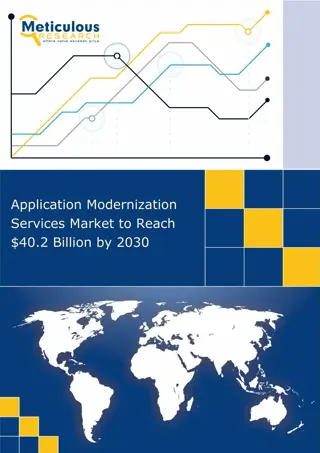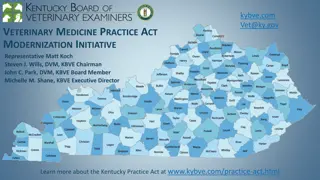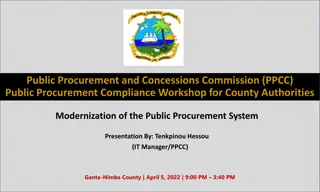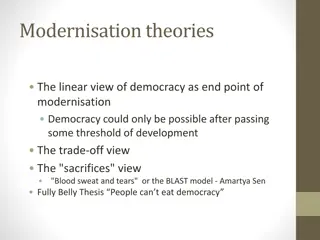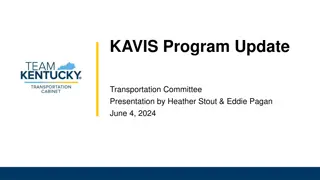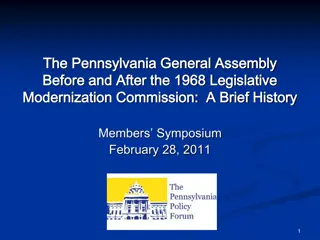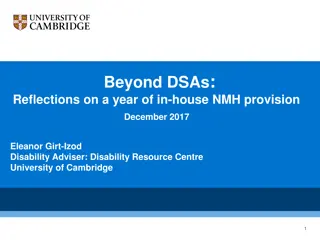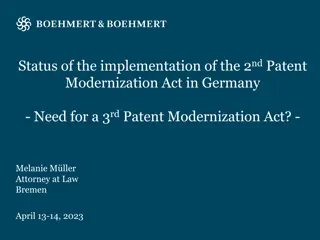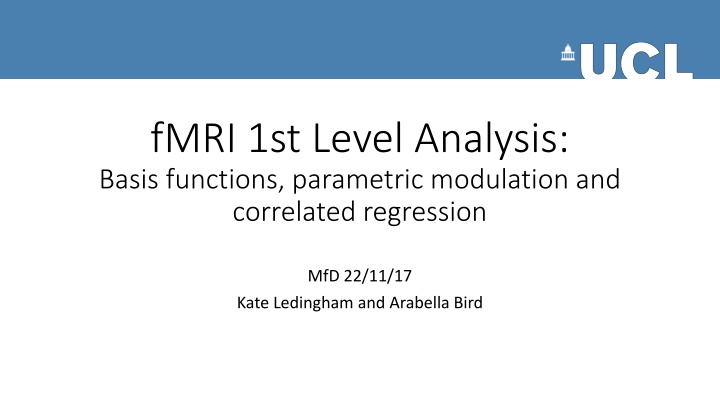
NMLS Modernization Highlights and Purpose
The Nationwide Multistate Licensing System & Registry, or NMLS, is the system of record for various non-depository industries such as mortgage, money services businesses, consumer lending, and debt collection. Launched in January 2008, NMLS aims to enhance coordination among regulators, streamline processes for industry players, and elevate consumer protection. State agencies manage licenses through NMLS, with over 400,000 loan originators registered in the system. State-supported regulation is applied on a national platform for improved efficiency and information sharing. The decision to modernize NMLS is driven by software assessments, future development needs, strategic business objectives, and a formal RFP process.
Download Presentation

Please find below an Image/Link to download the presentation.
The content on the website is provided AS IS for your information and personal use only. It may not be sold, licensed, or shared on other websites without obtaining consent from the author. If you encounter any issues during the download, it is possible that the publisher has removed the file from their server.
You are allowed to download the files provided on this website for personal or commercial use, subject to the condition that they are used lawfully. All files are the property of their respective owners.
The content on the website is provided AS IS for your information and personal use only. It may not be sold, licensed, or shared on other websites without obtaining consent from the author.
E N D
Presentation Transcript
fMRI 1st Level Analysis: Basis functions, parametric modulation and correlated regression MfD 22/11/17 Kate Ledingham and Arabella Bird
Temporal basis functions Definitions Basis function combine a number of simple functions to describe a more complex function E.g. Fourier analysis the complex wave can be decomposed into the sum of the three simple waves }
Temporal basis functions Purpose In fMRI analysis, it is necessary to describe a complex function This complex function is of % BOLD signal change over time Peak Brief Stimulus % BOLD signal change over time = canonical haemodynamic response function (HRF) Undershoot Initial Undershoot
Temporal basis functions Purpose Various different basis sets can approximate the signal Best practice: to use functions that relate to our knowledge of the shape of the HRF 2 gamma functions provide best guess of BOLD response Fourier basis set Finite impulse response set Gamma functions
Temporal basis functions Informed basis set (Friston et al, 1998) 2 gamma functions HRF best guess Multivariate Taylor expansion variability Temporal derivative (blue) Dispersion derivative (green)
Temporal basis functions Using SPM
Parametric modulation Parametric regressors Parametric v Factorial Polynomial expansion: Constant (average effect across trials) + linear component + quadratic component Parametric experimental design Useful for paradigms with continuous variables, or stimuli with multiple dimensions Useful if you are anticipating that the amplitude of the response may be different for each stimulus dimension or will change over time Eg: reward- based decision-making/model based learning (see O-Doherty 2007)
Parametric modulation Specifying parametric regressors in SPM Polynomial expansion: Constant + linear component + quadratic component
Correlated regressors GLM Y= 0 + 1X1 + 2X2 + Y = BOLD response, X1 = visual component X2 = motor response Confounds X1 may be confounded with X2 due to their temporal dependence (eg. Button press and visual stimulus) Mumford et al., 2015 Solution Orthogonalisation (SPM carries out serial orthogonalisation) Careful experimental design (toolboxes NeuroDesign )
Many thanks to Dr Guillaume Flandin Sources Previous MfD lecture slides O'Doherty JP, Hampton, A, and Kim, H. (2007) Model-Based fMRI and Its Application to Reward Learning Mumford JA, Poline J-B, Poldrack RA (2015) Orthogonalization of Regressors in fMRI Models. PLoS ONE10(4): e0126255 Statistical Parametric Mapping: The Analysis of Functional Brain Images (2007) Next week: 2nd level analysis Any questions?


